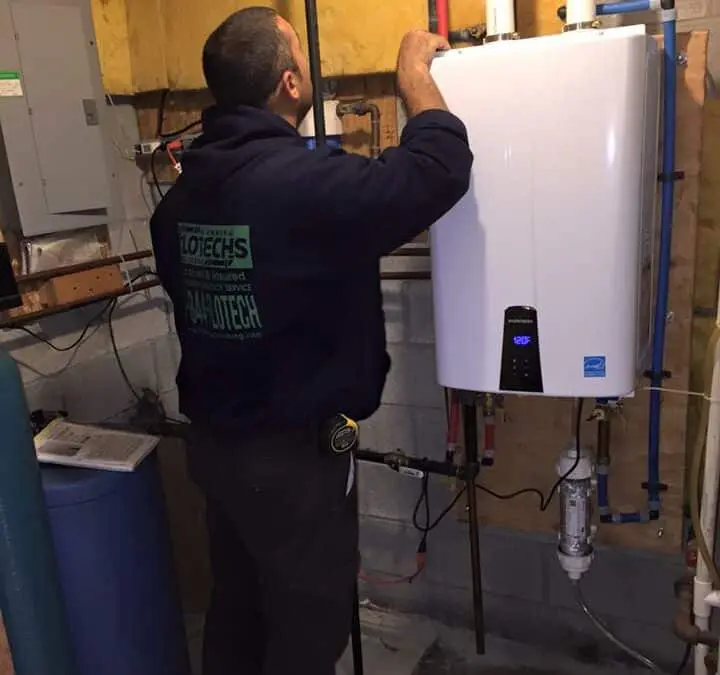The cold season is upon us, and many people have started seeing a jump in their energy usage. That’s typical of the season, but if you want to save on your power bill these next few months, check out these tips. If you’re a “snow bird” and leave your home for warmer weather, check out our article on how to winterize your home.
Check for light around exterior doors
Do you know about the Light Test? If you have an exterior door that goes to a garage, backyard or front porch, keep the room dark and turn the light on the outside or in the garage. You’ll be able to see how much light is around the door between the frame, and if there is too much light, that’s a sign that you’re letting in a draft that can drive up your energy usage.
Weather Stripping is a good way to mitigate the air coming in (or heat leaving) your home. You can also opt to have a slide under the door, which is usually foam or beaded round sacs that will keep drafts in check under the door.
Seal windows
The door is just one place where heat can escape. If your home’s windows aren’t properly sealed, they can let in or let out the air. Windows that do not need to be opened can be sealed up with plastic weathering products. Many of them can be applied so blinds and window treatments can still be used. This will keep. And you’ll see evidence of a large draft as the plastic fills and empties.
If you do notice a draft, you can seal your windows with weatherstripping or caulk to prevent heat from escaping.
Exterior radiant heat check
SoIf you’re lucky enough to have exterior radiant heat, whether installed under your driveway, patio or walkways, be sure to check that it’s working. Since you wont have snow to check actually before it snows, here’s a little trick: take some ice and turn your system on. At the same time, if you have an area very close to it add the same amount of ice. If your system is doing it’s job the ice that’s on the radiant heat will naturally melt faster.
Adjust your water heater
Your water heater has a control knob on it so you can make the water warmer during the colder months. Typically, it’s best to have the water temperature set to about 120 degrees. This will provide optimal efficiency for your hot water heater. And don’t forget, once winter is over, you can always adjust your water heater it to your desired temperature.
Close exterior vent flaps
Sometimes exterior vent flaps can get stuck on the outside of the home. The air that blows from a kitchen oven or bathroom exhaust fan will blow the flap open and allow the air to escape. If the flap doesn’t close, air can travel right back into your home. Make a habit of checking that the flap has closed so you don’t see any surprise costs on your power bill.
Seal sliding doors
Sliding glass patio doors can be great in the summer, providing ease of access to and from the exterior areas of your home. But doors with faulty seals can let the cool air in. You can choose to seal the entire door. Use the same test you used with the windows to see if the plastic wrap expands and contracts.
Check for light beneath the garage door
A drafty, cold garage will have the rooms above it colder than other rooms. Perform the light test on your garage door. If you spot too much light at the bottom, you may want to consider replacing or increasing the rubber insulation at the bottom of the door to eliminate the gap.
Insulate your home
Proper insulation can help keep heat in and cold out. Ensure your attic, walls, and floors are well-insulated to prevent heat loss. Rugs can also help insulate your floors and keep your feet warm.
If you have ductwork that runs through uninsulated areas of your home, getting those ducts wrapped with insulation will help the air stay contained within the duct and continue to travel to the intended vents.
Adjust the thermostat
There’s no sense heating an empty home. When you’re gone for the day, set your thermostat to a lower temperature to save energy and money. Better yet, invest in a programmable thermostat so you can automatically adjust the temperature in your home based on your schedule.
Change your ceiling fan’s direction
During the winter months, it’s helpful to turn the rotation of ceiling fans clockwise which will help circulate warm air throughout the room. It probably goes without saying, but fans tend to collect a lot of dust. So while you’re up there, take a wet rag to the blades of the fan – your allergies will thank you later.
Open your base kitchen cabinets
If you have exposed pipes beneath your sink, sometimes leaving your kitchen or bathroom cabinets or drawers open will allow heat to circulate, warming places that don’t need the heat.
Check your radiant heat system
It’s a good idea to turn your radiant heating system on to ensure it’s working properly. If possible, do this prior to winter so if it needs to be repaired, you can get the proper help in to address it.
Window treatments
If you have thicker fabric curtains, you can keep window treatments closed during the coldest parts of the day to help keep heat in.
Draft stoppers
Draft stoppers can be placed at the bottom of doors to prevent cold air from entering your home. Some of them come with beads and can be shaped to fit in a corner if need be. Others can slide under the base of the door and typically have a circular piece of foam on both sides.
These are some precautions you can take to increase your home heat efficiency. Flotechs Plumbing & Heating is a Yonkers-based company that specializes in heating, plumbing, and cooling. From repairs and maintenance to system upgrades and plumbing and/or heating emergencies. Give us a call if you need us at (914) 207-8901.



